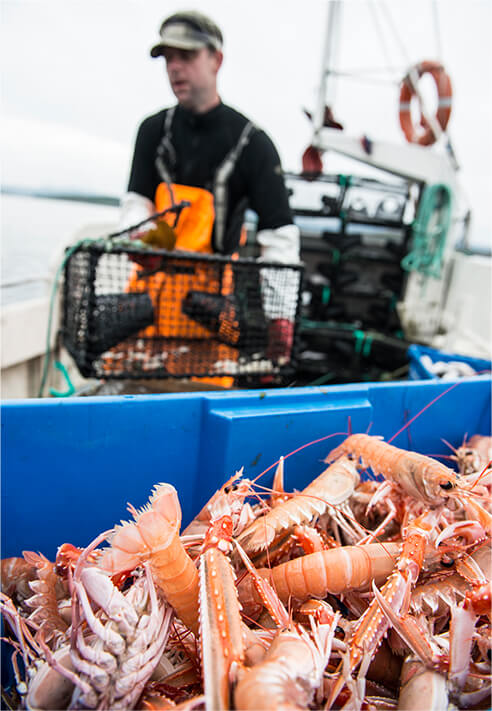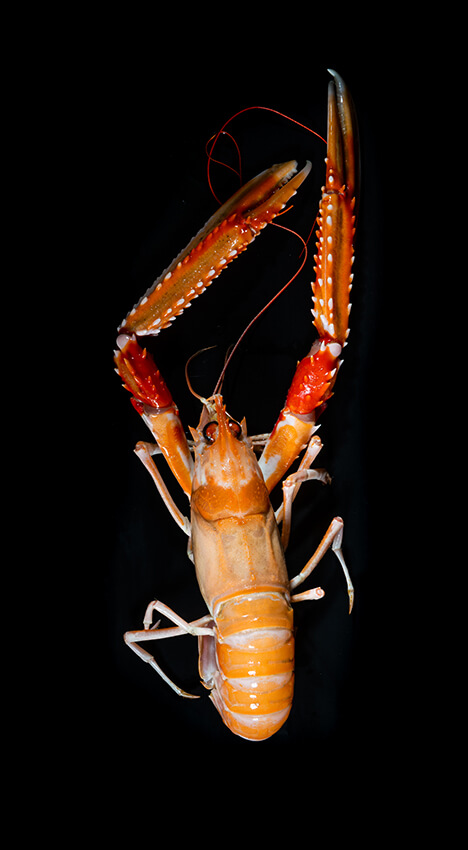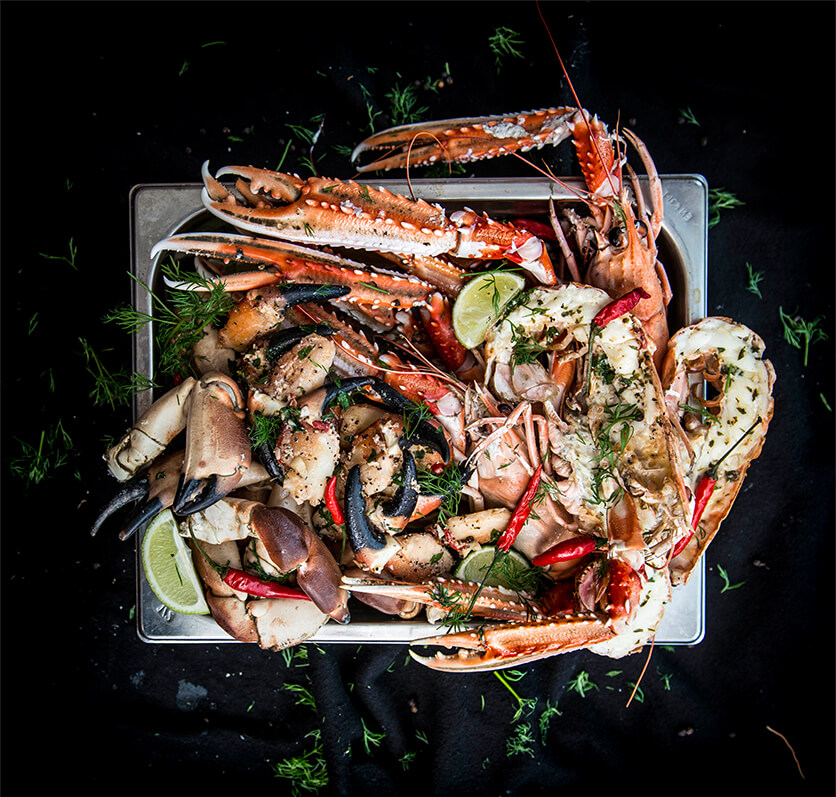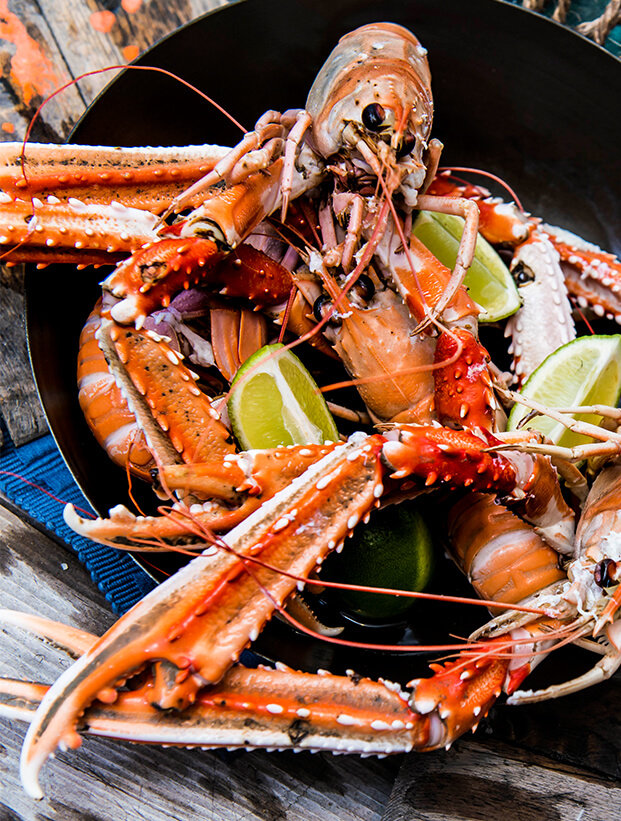Norwegian langoustines (Nephrops Norvegicus) are the tasty recluses of the deep.
Not a natural socialite, they spend much of their time hiding in a hole that they dig for themselves at the bottom of the sea. This is because they live and hunt exclusively in the dark, only venturing out of their burrows at dawn and dusk, to eat, and more rarely, to mate. Their reasoning here is easy to understand; the slightest exposure to light can blind their sensitive eyes.
When it comes to reasons to only venture out during darkness, that is a pretty good one!
What this creature lacks in sociability, it makes up for when it features in a recipe. As a nutritious and delicious ingredient, langoustines are a flexible accompaniment to the likes of casseroles, soups and even salads.

When cooked on their own, they are nothing short of delicious. This is true even when they are just simply seasoned and grilled.
These creatures can be caught year-round in the waters surrounding Norway, with areas close to the Lofoten Islands and the Strait of Skagerrak being particular hotspots for fishermen on the hunt.
In fact, this is a dish that is so associated with the country, that in certain areas, it is more widely known as the Norway lobster.
It thoroughly deserves this moniker, too, as these orange creatures are closely related to their lobster cousins in both taste and image, and they are regularly caught along the Norwegian coast.
Of course, Norway lobsters are smaller and lighter in color, but they provide a similar sweet and complex flavor for anyone who is lucky enough to get to eat them.
Physical
Characteristics
The Norway lobster is much smaller than its namesake.
Generally speaking, this creature grows to a maximum length of about 25 centimeters.
It has a long abdomen, a broad tail fan, claws, and four pairs of legs, the front three of which also bear claws. It also has two pairs of antennas, which are ideal for hunting and scavenging. They are also useful for recognizing nearby danger and retreating.
Spawning occurs between summer and early Autumn for the langoustine, with the female carrying between 1000 and 5000 fertilized eggs underneath her abdomen for eight to nine months. It can live up to 15 years of age, with lifespans of between five and ten years more common. Its Latin name Nephrops translates to "kidneys," which refers to the shape of the creature's eyes.
With sustainability at the forefront of all Norway's fishing laws, there are strict rules around catching these sea creatures. The fishing of the Norway lobster is monitored by the International Council for the Exploration of the Sea (ICES). They ensure that these creatures' ecosystem is not adversely affected by overfishing. In fact, fishermen are even asked to pay particular attention to avoid catching young and spawning Norway lobsters.

Natural
Habitat
Keeping itself to itself is what the Norway lobster does best.
A natural introvert, it chooses a suitable muddy ocean floor, digs a burrow, and for most of its life, just stays there. In fact, females will pretty much always stay within the walls of their burrow.
They live at a depth ranging from 20 to up to 500 meters. This, of course, is a massive range, with the creature's behavior different, depending on the depth. For instance, langoustines that live in shallow water are mostly nocturnal due to daytime light piercing through the water and potentially blinding their sensitive eyes.
Meanwhile, the ones that live at deeper depths are more active during the day, as the risk of the light coming through is not a factor.
Masters at hide-and-seek, young Norway lobsters often dig their burrows as an extension of the adult's one. They are creatures that can be found all the way from the Western Mediterranean to the Northeast Atlantic.

DIET
As said previously, light is a natural enemy of the Norway lobster. This reclusive creature waits until there is not a hint of light before appearing for its chance to feed.
When the time is right, the langoustine is far from a fussy eater. This omnivore will eat virtually anything that is in its surroundings that is edible. Other crustaceans, mollusks, worms, and carrion all feature in its diet.
Unfortunately for the Norway lobster, it is also hunted by other bottom-dwelling fish, with the likes of cod enjoying this delicacy every now and again.

Nutrition
Interestingly, the langoustines don't change their orange color when cooked, remaining light orange throughout.
One of the beautiful things about this dish is its versatility; it can be used as an excellent ingredient in the likes of soups, casseroles, or even salads—this is because its sweet taste goes exceptionally well with a wide variety of options and it can definitely be described as 'a healthy option'.
It is also an ideal dish when just thrown on the grill or featured as the main event in a more complex recipe. You can't go wrong with Norway lobster marinated in garlic, herbs, and white wine. Another option is to use it within sushi… honestly, the list of options with this ingredient is endless.
It is also a great source of selenium, protein, and vitamin B12. These support the normal functioning of the brain and the immune system. Not only that, it is also low in calories and saturated fats.
Therefore, if you are looking for a nutritious and versatile option at mealtime, then you should invite this recluse for dinner. They may be creatures that live without light, but once initiated, you will be glad you are no longer in the dark about the Norway lobster.
